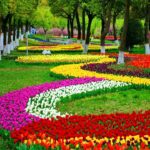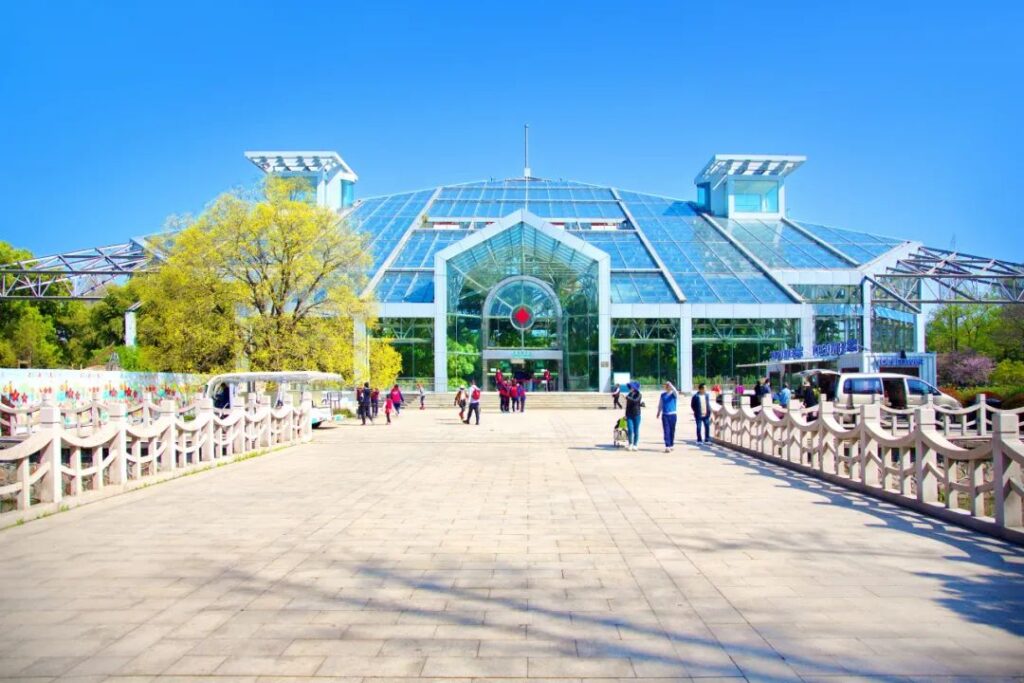
Located at 1111 Longwu Road, Xuhui District, Shanghai, the Shanghai Botanical Garden is an urban botanical garden focusing on plant introduction, domestication, research, scientific dissemination, and horticultural display. Its predecessor, the Longhua Nursery, was built in 1954, and the nursery was transformed into a botanical garden in 1974. In 1980, it was officially named the Shanghai Botanical Garden.
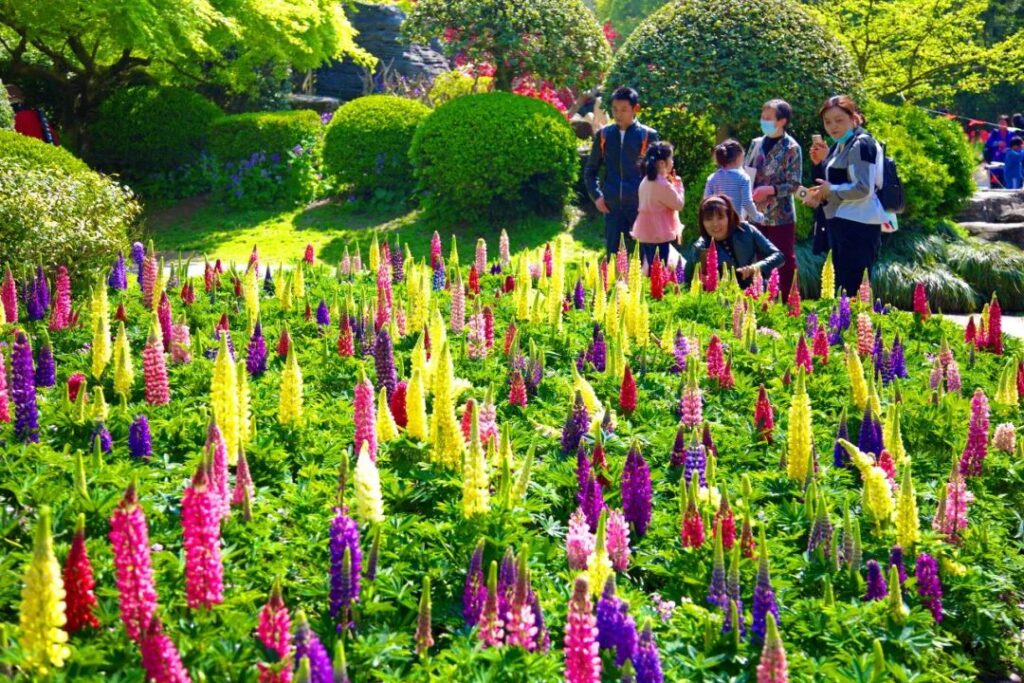
Since its establishment, the Shanghai Botanical Garden has primarily focused on collecting and introducing wild plants from the middle and lower reaches of the Yangtze River. It has amassed a collection of 3,500 species and over 6,000 varieties, which have been used to select horticultural cultivars for urban greening. The garden features 15 specialized gardens, including the Pine and Cypress Garden, Fern Garden, Magnolia Garden, Peony Garden, Rhododendron Garden, Rose Garden, Maple Garden, Osmanthus Garden, Bamboo Garden, and Herb Garden.
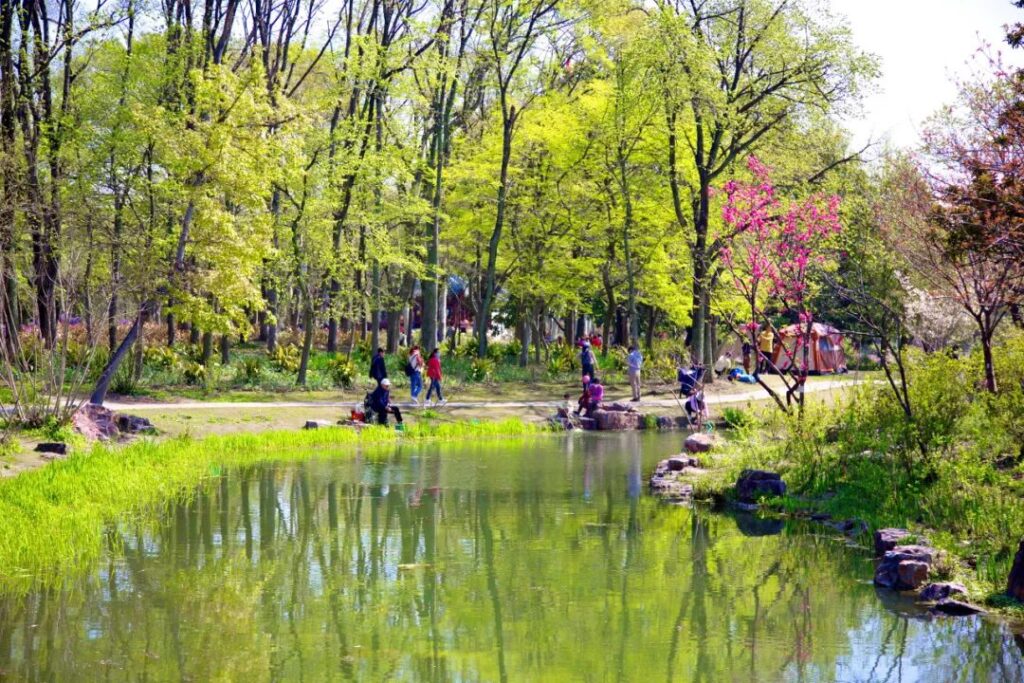
After decades of development, the Shanghai Botanical Garden has transformed from a plant museum showcasing various plants into a multifunctional urban garden. The garden incorporates small bridges, flowing water, white walls, green tiles, rockeries, ponds, and waterfalls, creating an elegant and unique environment that provides Shanghai residents with an excellent place for relaxation.
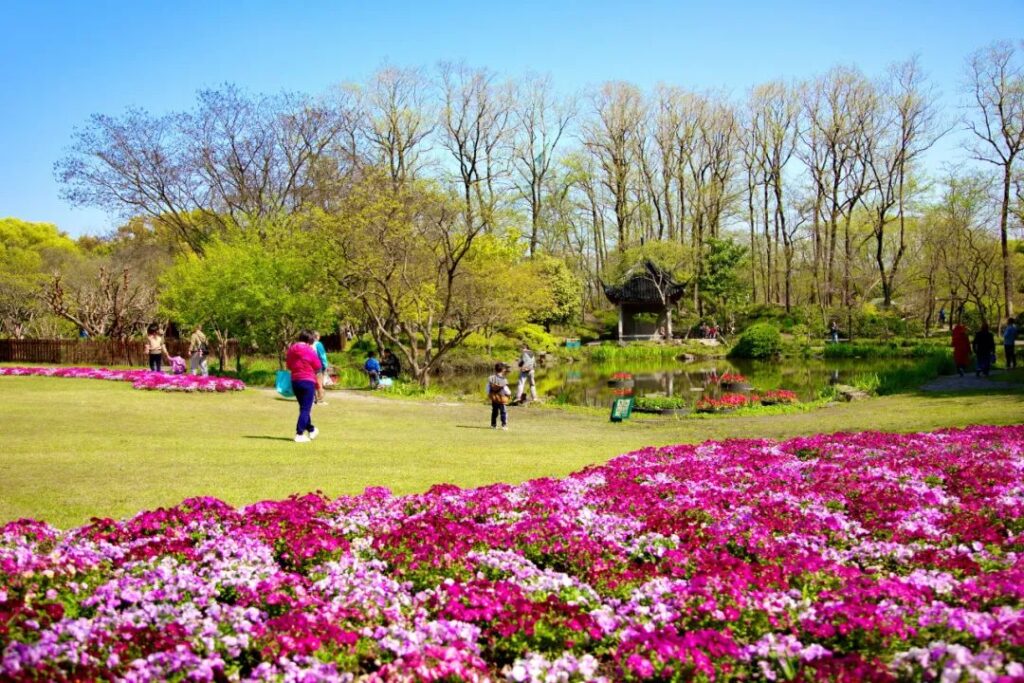
While promoting botanical knowledge, the Shanghai Botanical Garden also showcases a diverse and colorful landscape. The garden uses specialized plants as the main attraction, complemented by small-scale garden architecture, forming distinct plant and landscape scenes with different artistic conceptions. Every year, numerous visitors come to experience the blooming flowers in spring, the refreshing lotus breezes in summer, the fragrant osmanthus in autumn, and the plum blossoms braving the snow in winter.
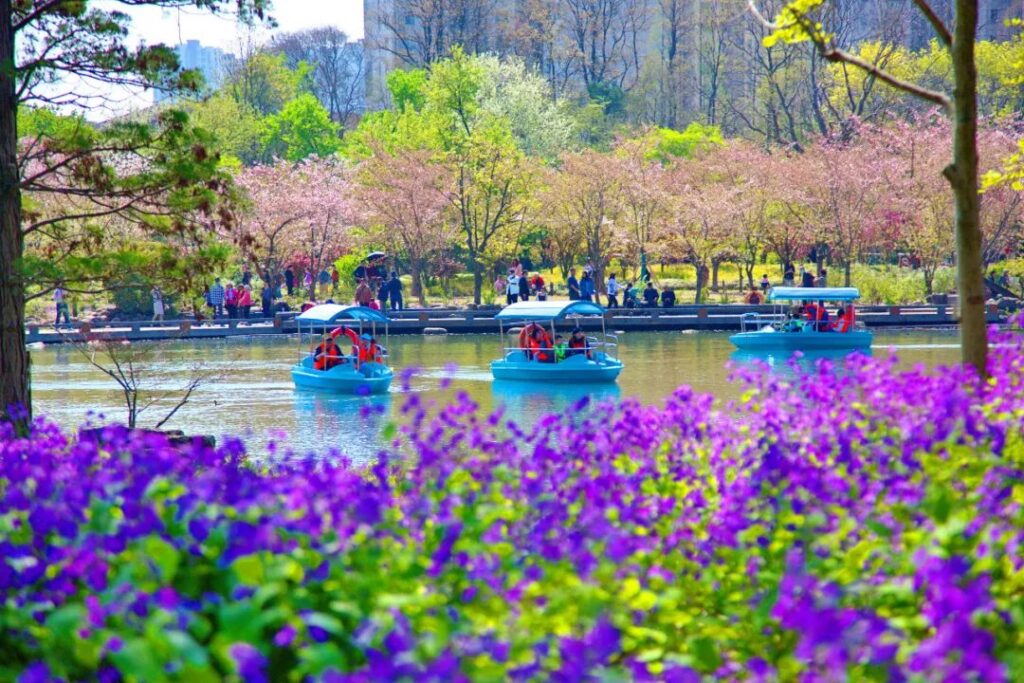
The Shanghai Botanical Garden offers scenic beauty throughout the four seasons, making it an ideal destination for outdoor excursions and flower appreciation in Shanghai. Especially in March, when the warm breeze caresses the face and the orioles sing among the willows, the garden bursts with the simultaneous blooming of cherry blossoms, peach blossoms, peonies, crabapples, tulips, magnolias, and camellias, adorning the Shanghai Botanical Garden with a vibrant spring palette. The myriad of flowers in various shades of purple and red creates a breathtakingly beautiful and enchanting sight.

Perhaps due to its location in the Jiangnan water town, the Shanghai Botanical Garden incorporates numerous streams that meander through the park, converging into a lake at the center. Surrounding the lake are the Peony Garden, Rhododendron Garden, Osmanthus Garden, Pine and Cypress Garden, Rose Garden, Bamboo Garden, and other plant cultivation areas of different genera and species. Within each area, the terrain undulates, and the pavilions, corridors, terraces, and towers harmonize with the flower beds and lawns.
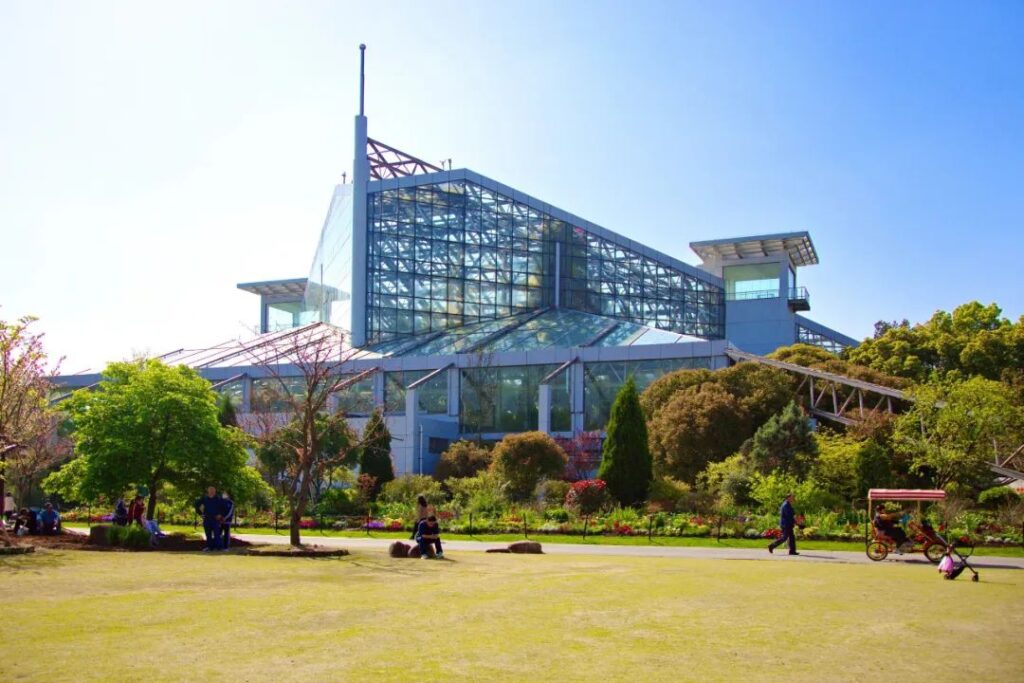
The Shanghai Botanical Garden features two exhibition greenhouses: the Tropical Plant Greenhouse and the Four Seasons Flower Greenhouse. The exhibition greenhouses revolve around the themes of four-season flowers and tropical rainforests, vividly recreating a dazzling tropical landscape that allows visitors to appreciate the magnificent scenery while learning about the relevant plant knowledge.
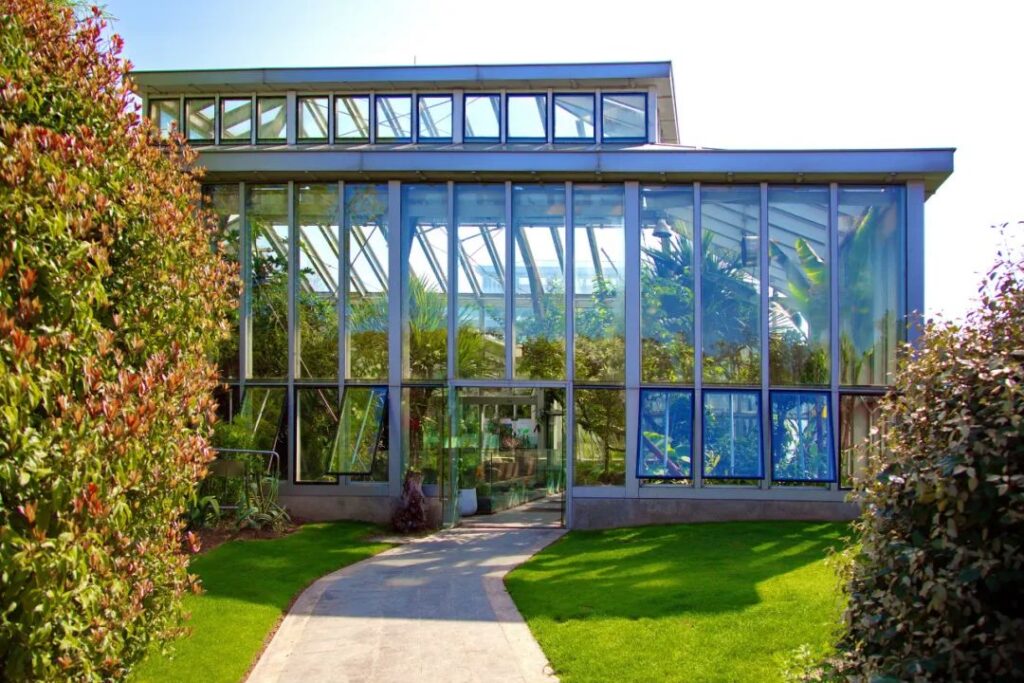
The greenhouses showcase more than 3,500 tropical plant species from around the world. Visitors can observe not only tropical trees such as palm family plants, buttress root plants, and economically valuable plants but also a variety of colorful carnivorous plants, bromeliads, succulents, ferns, flowering shrubs, and orchids. Upon entering the greenhouse, I found myself immersed in this magical tropical rainforest.

Among these tropical plants, the beautiful butterfly orchids captivated me the most. I noticed that among the numerous tropical flowers, only the butterfly orchids displayed the richest colors. Their flowers came in pure white, pure purple, pure yellow, purple-spotted, white-spotted, yellow-spotted, and dark red, with various colors intertwining, resembling groups of vividly colored butterflies perched on the flower stalks, fluttering their beautiful wings.
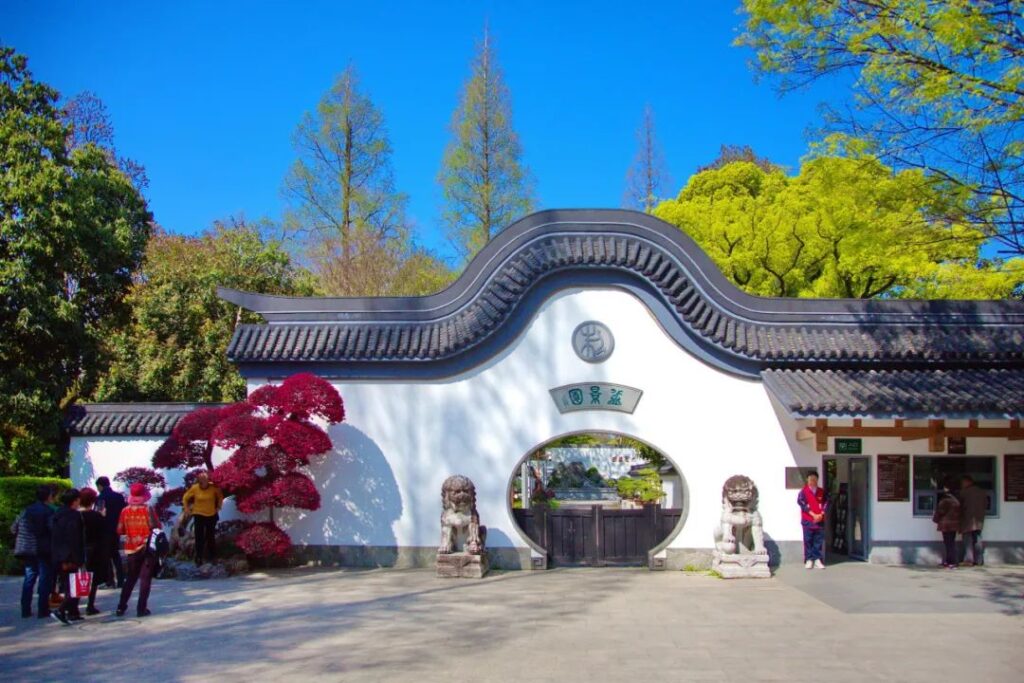
The Bonsai Garden is an independent Jiangnan-style courtyard garden. From the early days of the botanical garden’s establishment, it has collected and created a large number of bonsai. This place is the birthplace of Haipai bonsai, and the Bonsai Garden is renowned both at home and abroad for its characteristic of “learning from nature and creating a sense of antiquity in the painting.” The garden houses thousands of bonsai, with more than 70 tree species represented, making it the largest bonsai specialized garden open to the public in China.

The Orchid Room is a courtyard building with a classical Chinese garden style. The courtyard features lush trees, small bridges, flowing water, white walls, green tiles, ponds, and rockeries, creating a tranquil and leisurely atmosphere. The Orchid Room is divided into a potted plant display area, a natural display area, and a courtyard display area. It also includes an orchid exhibition greenhouse designed to resemble the original ecological environment of orchids.
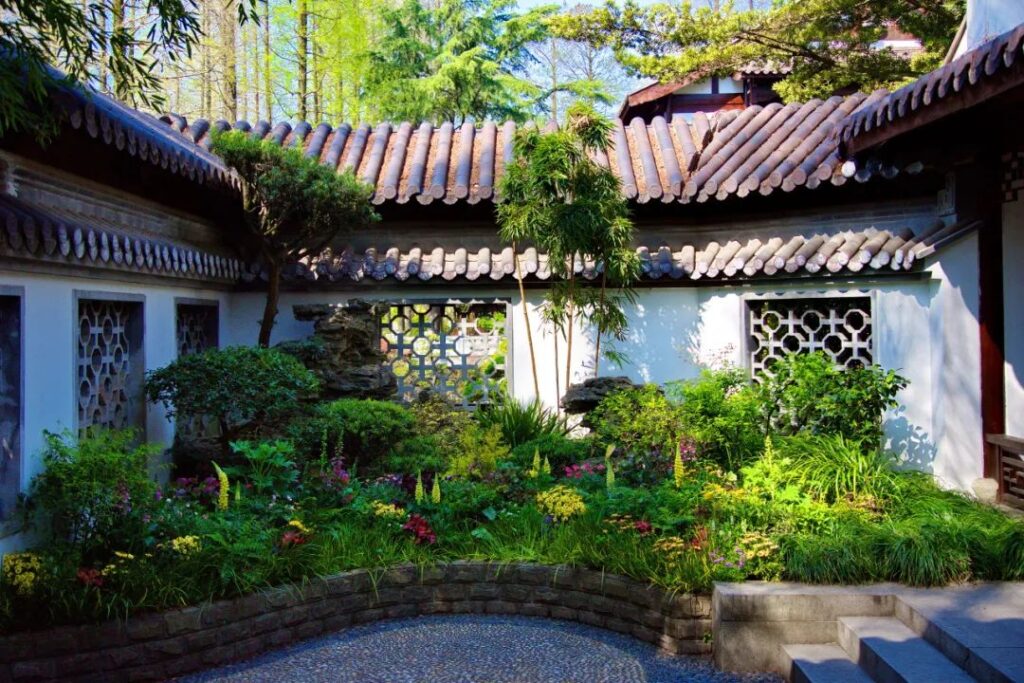
Orchids, known as the “gentlemen among flowers,” are integrated into the ancient architecture, combining with the pavilions, terraces, corridors, and towers to create a landscape that changes with every step. The characteristic Jiangnan classical garden landscape, with its pink walls, black tiles, and orchid fragrance, collectively interprets the charm of traditional Chinese orchid art and varietal characteristics, inheriting and promoting the essence of Chinese traditional orchid culture.
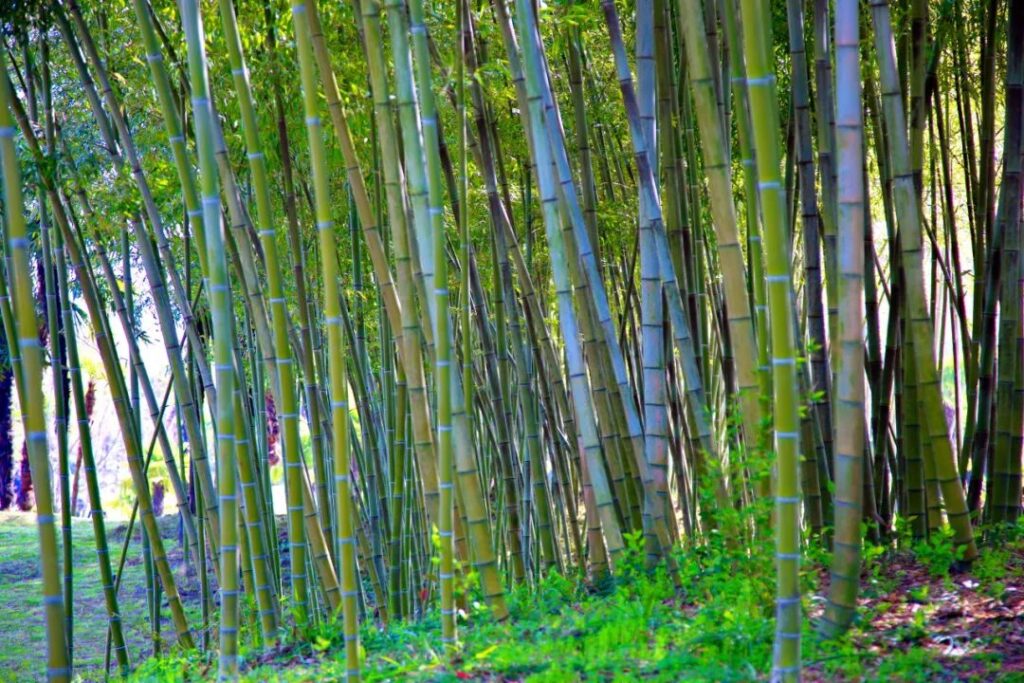
China is the country with the most abundant bamboo resources in the world and is known as the “Kingdom of Bamboo.” There are more than 40 genera and over 500 species of bamboo in China. The Bamboo Garden in the Shanghai Botanical Garden cultivates more than 100 species from 8 genera of the bamboo subfamily, including Moso Bamboo, Indocalamus, Bambusa, Bambusa multiplex, Bambusa oldhamii, and Bambusa ventricosa. Walking into the lush bamboo forest of the Bamboo Garden, the cool and refreshing atmosphere in the forest is truly delightful.

The Osmanthus Garden is located to the west of the Bamboo Garden and features more than 40 varieties of osmanthus from four major series: Silver Osmanthus, Gold Osmanthus, Red Osmanthus, and Four Seasons Osmanthus. Every autumn, the osmanthus flowers bloom competitively, with trees full of yellow flowers and a fragrance that can be smelled from afar. The Osmanthus Garden is also a specialized garden for Oleaceae plants such as Fraxinus insularis, Fraxinus chinensis, Chionanthus retusus, Forsythia, Fraxinus velutina, and Ligustrum lucidum.
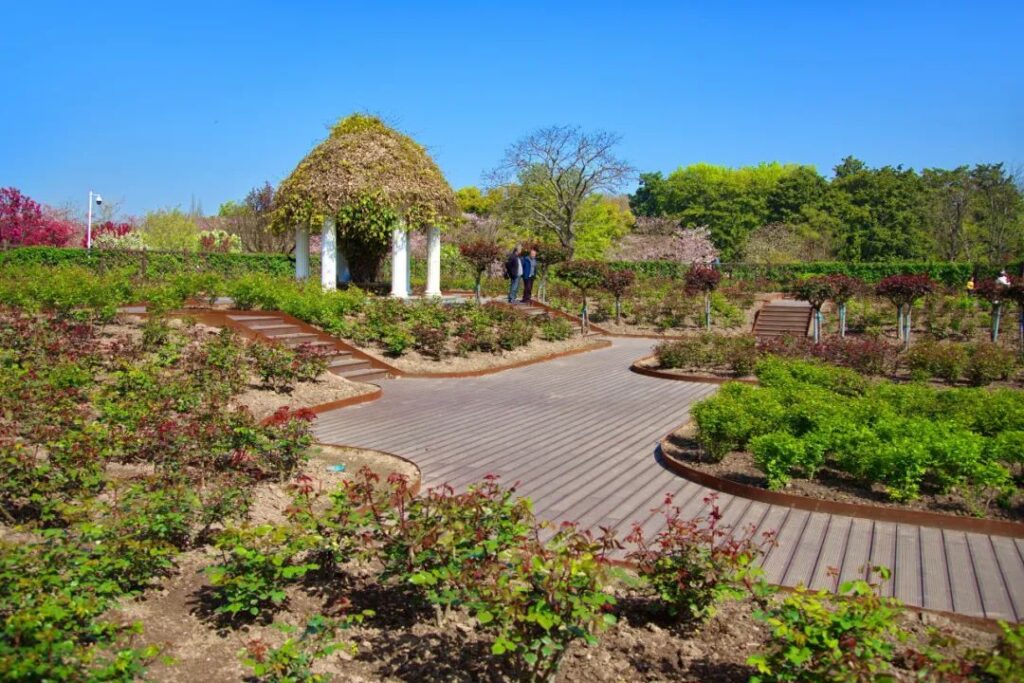
The Rose Garden is located north of the Osmanthus Garden and features corridor-style rose trellises. During the rose blooming season each year, pink, white, rose-red, and bright red roses bloom lavishly among the green leaves. The various colors of roses have formed a continuous flower wall, and under the sunlight, the flowers appear even more gorgeous and enchanting. Visitors stroll along the flower wall, taking intimate photos with the roses, fully enjoying the beautiful spring days.
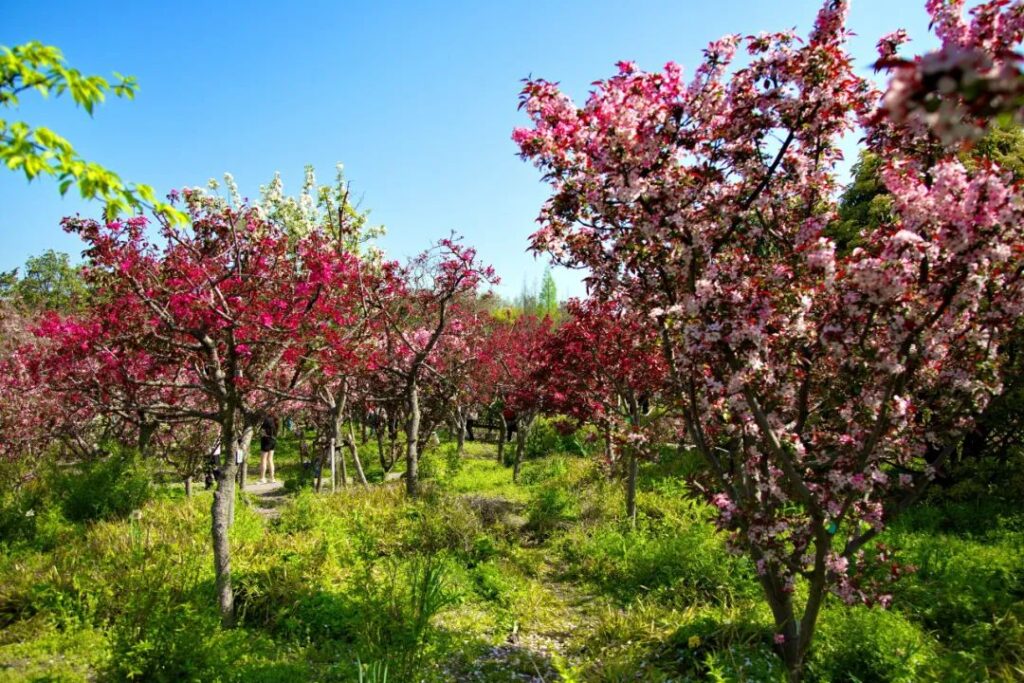
To facilitate visitors in appreciating flowers, leaves, and fruits, the garden has created multiple plant forest areas nearby, including the Rose Garden, Cherry Blossom Forest, Plum Blossom Forest, Peach Blossom Forest, Crabapple Forest, Cercis Forest, Photinia Forest, Hawthorn Forest, Loquat Forest, and Choerospondias axillaris Forest. Each forest area has its own flowering season of varying lengths, alternating with each other, resulting in a continuous display of flowers throughout the four seasons.
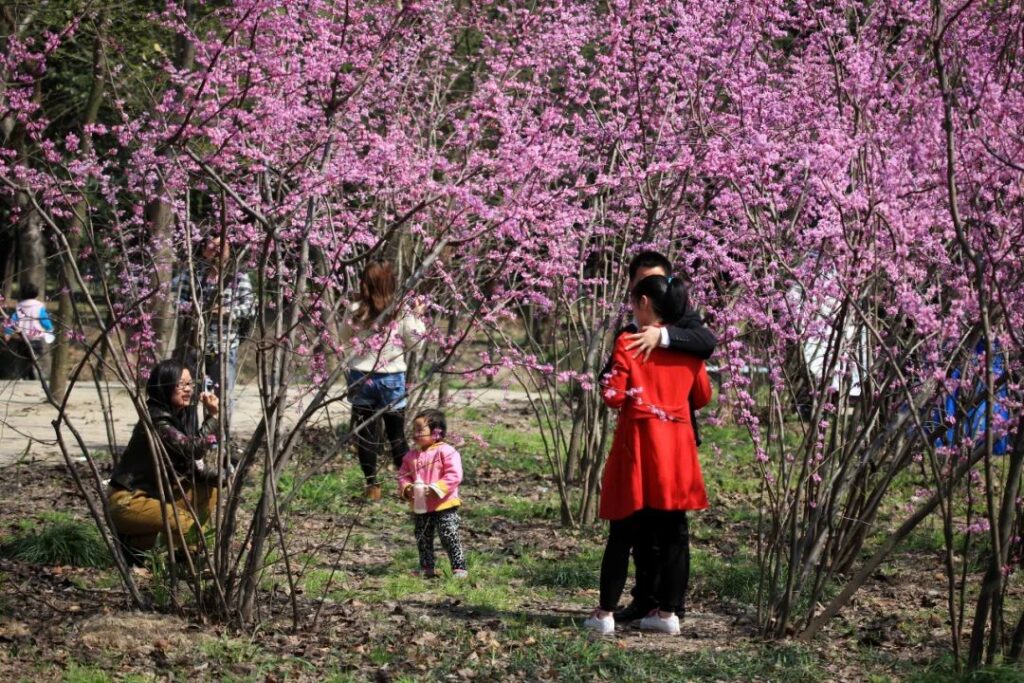
The Cercis Forest next to the Rose Garden does not refer to the common Bauhinia purpurea in southern China. Instead, the Cercis in Shanghai is a deciduous shrub belonging to the Cercis genus of the legume family. When the Cercis blooms, it leaves no branch untouched. Whether it is the main trunk or the side branches, as long as there is a slight budding spot, flower buds will emerge. Every March, when the Cercis enters its peak flowering period, it attracts numerous visitors to enjoy the spring blossoms.
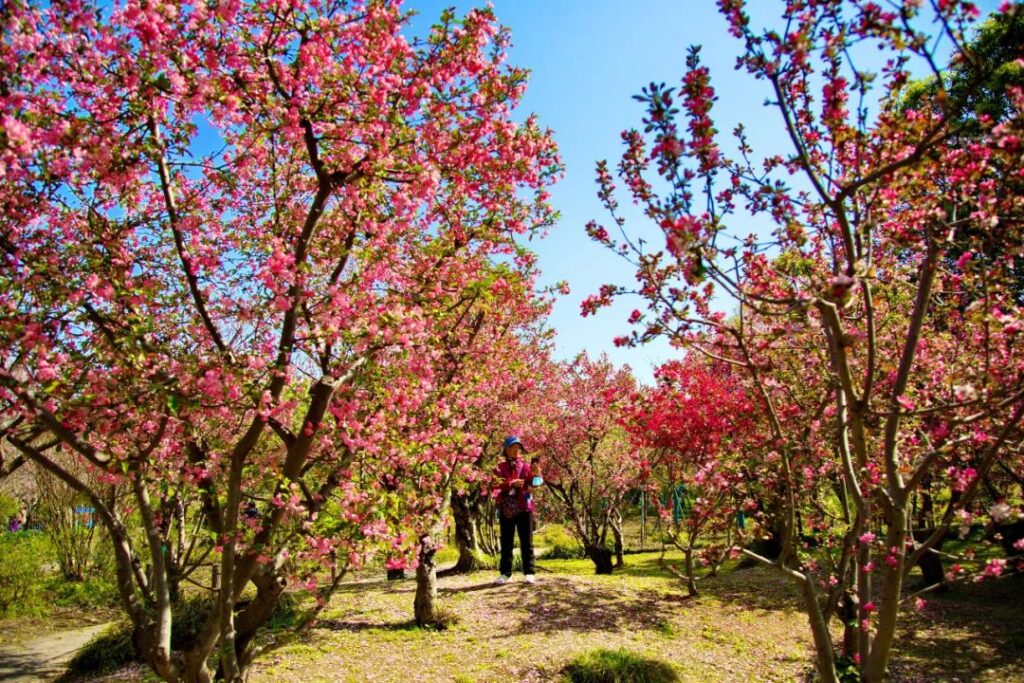
The Crabapple Forest is located south of the Rose Garden. It brings together the four major crabapple varieties: Malus micromalus, Malus halliana, Malus hupehensis, and Malus asiatica. Many precious ornamental crabapple varieties are also planted here. When the crabapples compete in full bloom, they appear either glamorous or elegant, clustered on the branches, utterly charming. As the breeze blows, the petals float lightly, like a dream.

Walking past the Crabapple Forest, you’ll encounter the Peach Blossom Forest, where the blooming peach flowers are stunningly red, elegantly white, and tenderly pink, with thousands upon thousands of blossoms. Not far behind the Peach Blossom Forest, several Prunus mume ‘Jugetsuzakura’ trees are in full bloom, with a tree full of purple hues. They stand quietly, unaffected by the wind, like beautiful models, striking the most beautiful poses for visitors to admire and photograph.
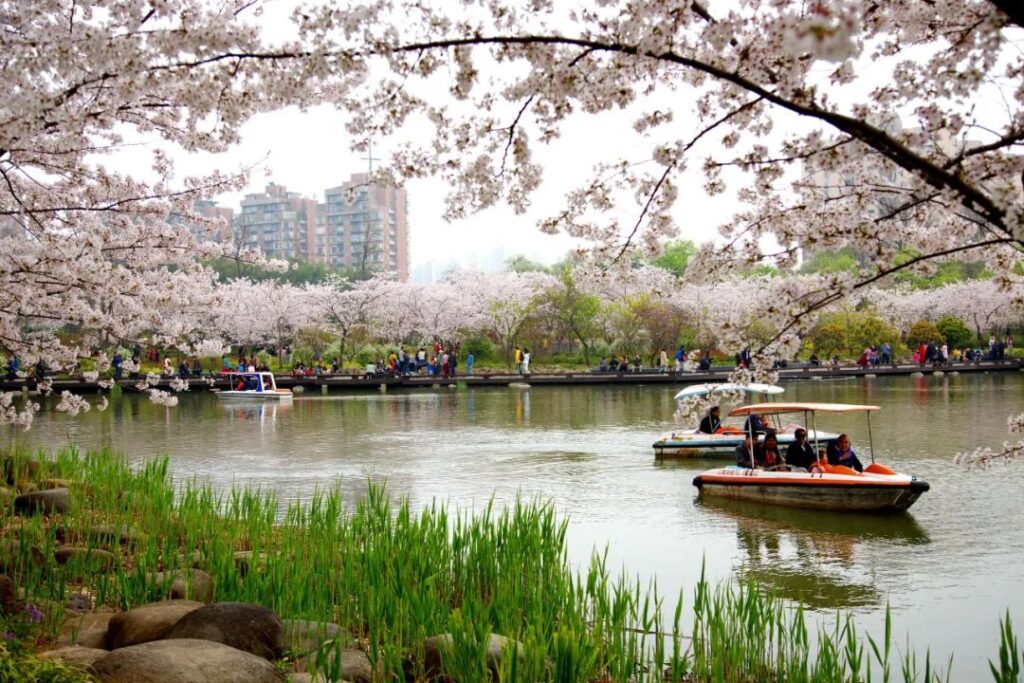
The larger lake in the botanical garden is called the Aquatic Plant Pond, where cherry blossoms are most concentrated. Upon arriving here, you’ll see cherry blossom trees clustered around the lake. The ethereal fragrance makes me can’t help but take a few extra breaths. When a gentle breeze blows, scattered petals fall like a sky full of snow, fluttering in disarray, filling the lake with fragmented cherry blossom petals. The flying cherry blossoms lightly sweep past my eyes, leaving me enchanted.

By the lakeside, there are a few Prunus ‘Hatsu-mikanzakura’ trees, also known as “Chuhan Sakura,” which is the earliest blooming cherry blossom variety. Its flowering period is from mid-late February to early March. The initial flowers are pink, turning light purplish-red when in full bloom, and dark red during the end of the flowering period. Prunus ‘Hatsu-mikanzakura’ blooms densely and compactly. From a distance, the trees appear to be full of flowers, like a piece of rosy cloud, which is truly spectacular.
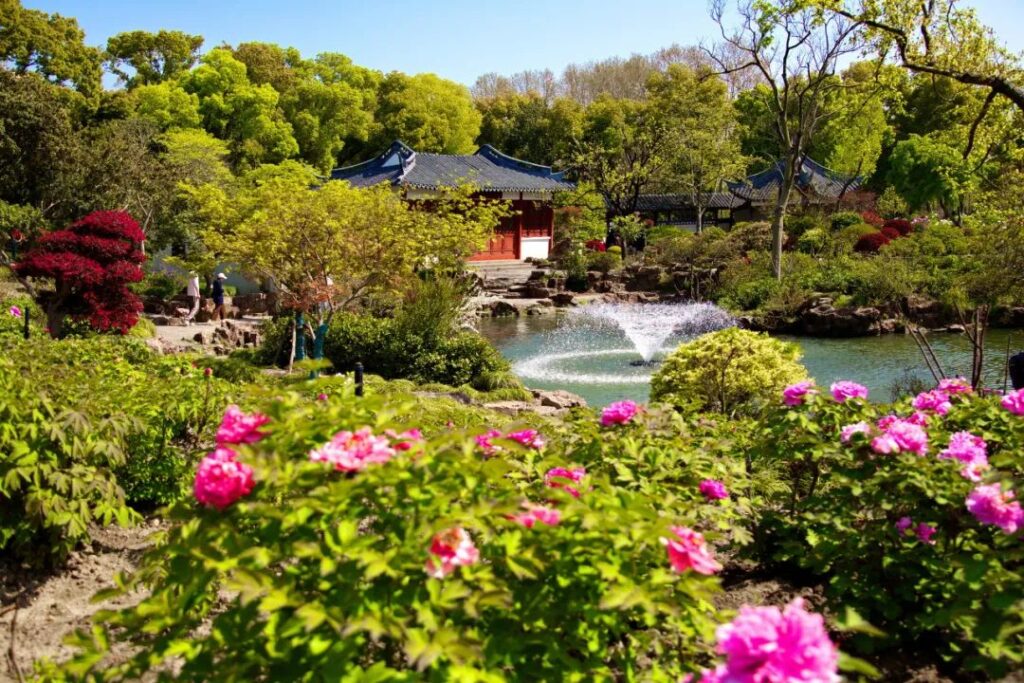
The Peony Garden is located north of the lake and features structures such as the Peony Pavilion, Peony Hall, and Peony Corridor, all of which are brick and wood structures built in the style of the Ming and Qing dynasties. The garden cultivates more than 300 varieties of peonies and nearly 10,000 herbaceous peonies. The main peony varieties include the Central China variety group, the Northwest variety group, the Jiangnan variety group, and imported Japanese peony varieties.
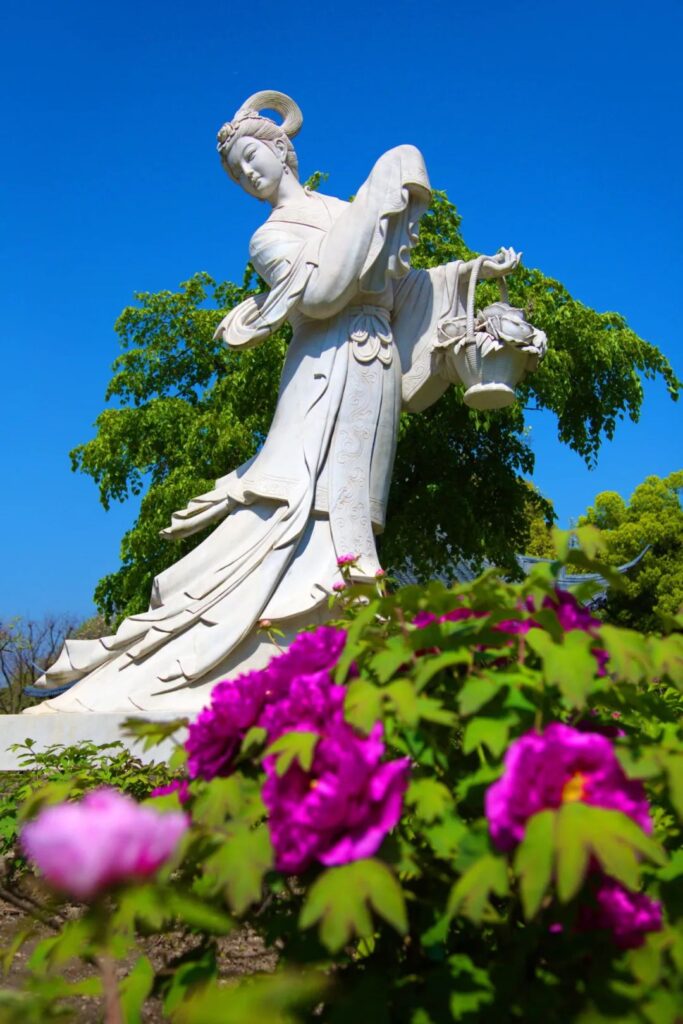
The Peony Garden at the Shanghai Botanical Garden boasts the largest area and the most concentrated variety resources in the East China region. The peonies in the garden are arranged in a natural style, integrating with the terrain, other flowers, trees, rocks, and architectural elements to achieve a harmonious and natural effect that appears as if it were created by nature itself, further accentuating the elegance and natural beauty of the peonies.
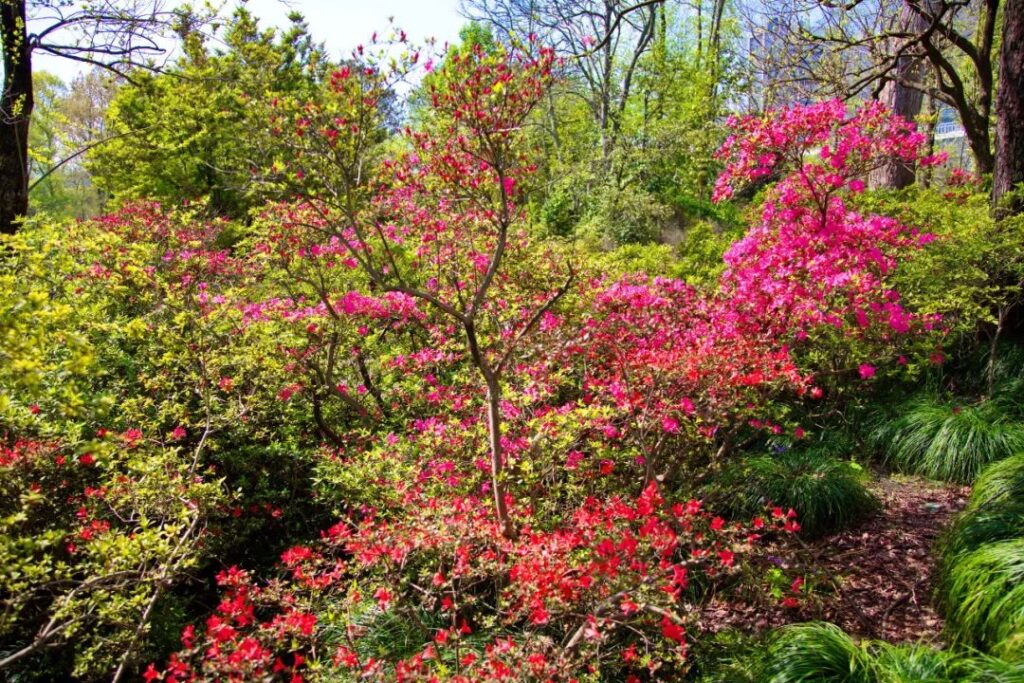
The Rhododendron Garden is located to the northwest of the Peony Garden, situated on a small hill. The garden is home to more than 5,000 rhododendron plants of various species, including spring rhododendrons, summer rhododendrons, Rhododendron micranthum, Rhododendron occidentale, and Rhododendron fortunei. Every year during mid-spring, the Rhododendron Garden bursts into a riot of colors as various rhododendron varieties enter their peak blooming period. The dense flowers are layered upon each other, covering the entire hillside, creating a magnificent sight. Walking into the garden feels like being immersed in a sea of flowers.
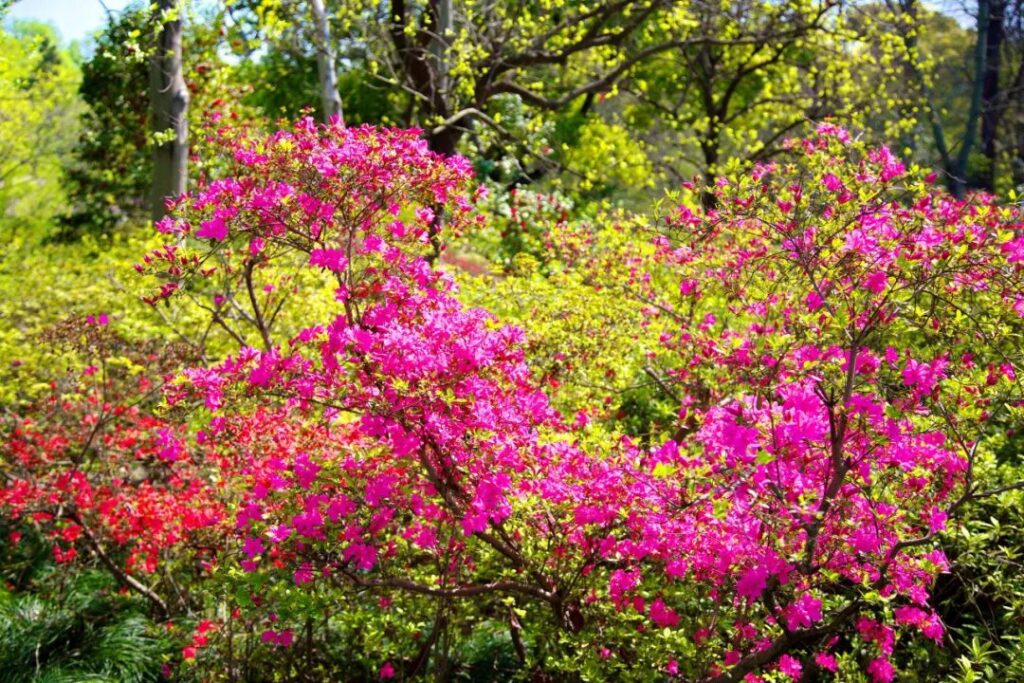
Rhododendrons are traditional famous flowers in China, known for their vibrant colors and diverse forms, earning them the title of “The Beauty of Flowers.” As renowned ornamental plants, there are approximately 900 species of rhododendrons worldwide, with over 530 species found in China alone. In recent years, to enrich rhododendron varieties and enhance the spring landscape effect, the Shanghai Botanical Garden has been dedicated to the introduction, collection, and breeding research of rhododendron germplasm resources.
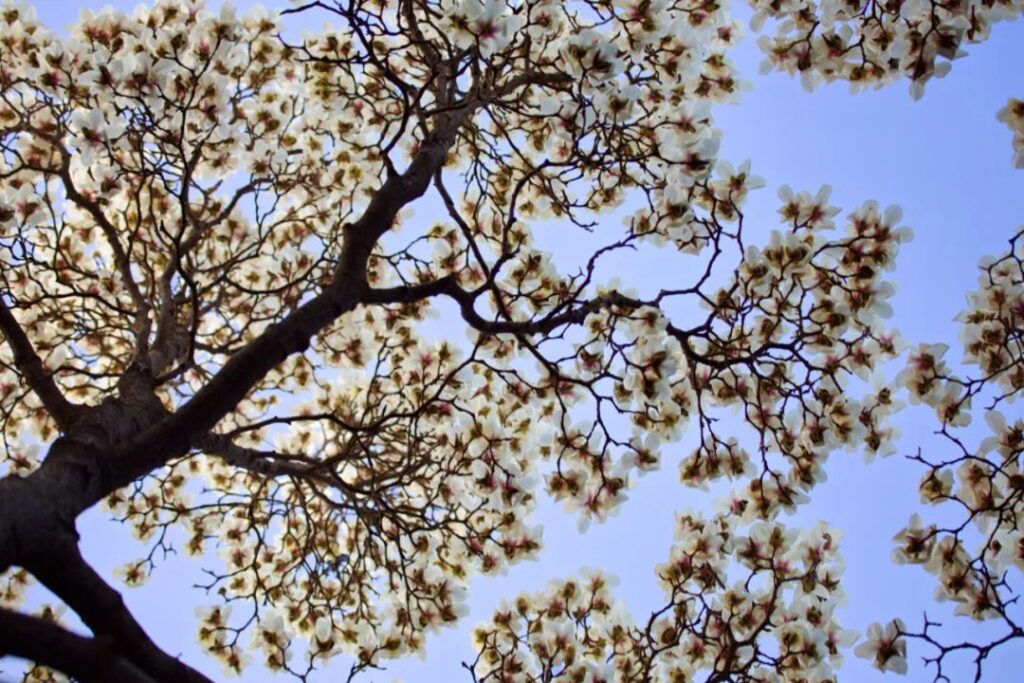
The Magnolia Garden is situated east of the Peony Garden and features 36 species of Magnoliaceae plants, including Magnolia denudata and Magnolia soulangeana. Every spring, the pristine white flowers of Magnolia denudata exude an elegant and stately charm, with a cloud-like and snow-like appearance that weighs down the branches. Meanwhile, when Magnolia soulangeana blooms, the entire tree is adorned with a splendid display of purple and white, appearing extraordinarily gorgeous.

The Conifer Garden is located north of the Magnolia Garden, where gymnosperm plants, known as the “mother of primeval forests,” are cultivated. The Conifer Garden features an undulating hilly terrain and is home to 54 species of gymnosperm plants, including Cedrus deodara, Pinus bungeana, Sabina chinensis, Juniperus chinensis var. kaizuka, Podocarpus macrophyllus, Torreya grandis, Metasequoia glyptostroboides, Taxodium mucronatum, Taxodium ascendens, and Cryptomeria japonica.
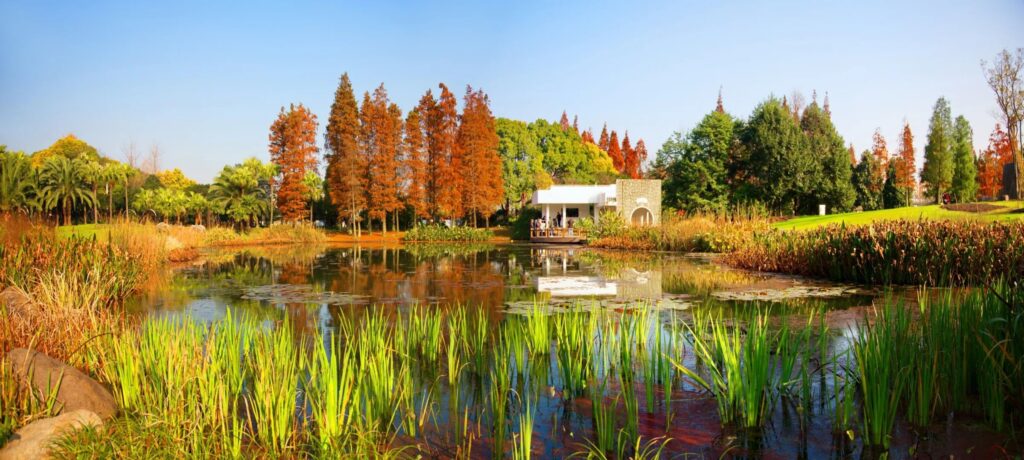
The Landscaping Demonstration Area is situated in the northeastern part of the botanical garden, where flower exhibitions are held. The area includes demonstration zones for vertical greening, hedges, flowering plants, ground cover plants, ponds, lawns, and rooftop greening. Most of the plants cultivated here are new varieties introduced from other regions or countries, complemented by garden architectural elements such as corridors, pavilions, and trellises, creating a beautiful and picturesque landscape.
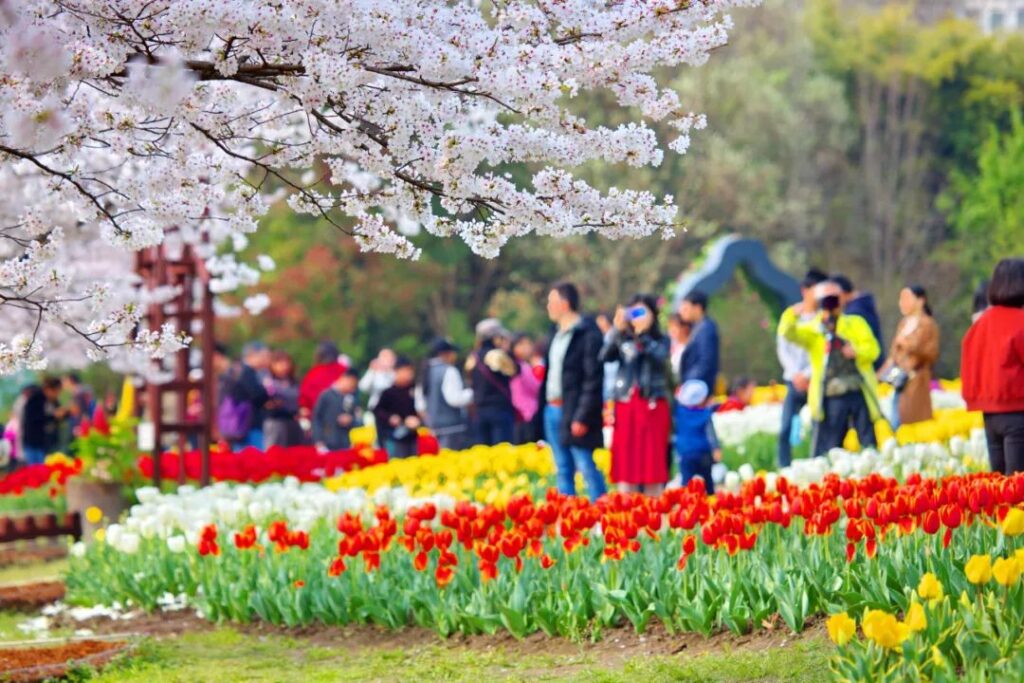
Spring is the most beautiful season in the botanical garden. During spring, the botanical garden is filled with lush grass, singing birds, vibrant flowers, and lush greenery, exhibiting a thousand charms and graceful postures. Especially when the cherry blossoms are in full bloom, it appears as if a magnificent cloud is covering the sky, with trees in full bloom resembling clouds and rosy hues. The patches of tulip fields form a beautiful and enchanting landscape alongside the demure cherry blossoms.
Related Articles:

